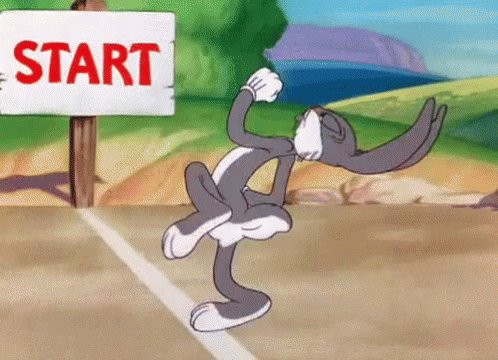Hello everyone! This is Felipe Barbosa (@felipecb_) a Product Marketing Manager from Brazil speaking. I'll be in charge of @pmmunderhood this week. Really excited to share my thoughts with you. A small presentation thread to begin with: (1/4) 🧵pic.twitter.com/sr1oohvULRR
I'm a Product Marketing Manager working in the past 10 years with Marketing and Product in tech companies here in Brazil. During this period I've always worked in the B2B space. (2/3)
Currently I'm working at VTEX as a Product Marketing Manager and I'm also an ambassador for Product Marketing Alliance here in Brazil. I'm passionate about Product Marketing and an avid reader (I'll share some book tips during this week) (3/4)
I'm really glad to be invited to take over @pmmunderhood this week and I hope you all like what I'll share with you and the community. Let's go! (4/4)
This is my plan for the week:
- Competitive Intelligence (how to start with it)
- Go-To-Market (from 0 to hero)
- Positioning (the most powerful Marketing idea)
- Product-Led Growth (what PMMs should know)
- Jobs To Be Done (understand your customers and market)
Stay tuned!
So, let's start with Competitive Intelligence. First of all I'd like to share this article from Crayon that I like: crayon.co/blog/what-is-c… 🧵(1/20)pic.twitter.com/eNJRzT2Sr66
We, as Product Marketing Managers, need to understand our market and customers. One important piece to solve the market puzzel is our competitors, isn't it? (2/20)
Hope you agreed with the previous tweet but I bet you heard something like these sentences in you company: "Competitors? We don't have competitors", "I'm not worried about competition, they should worry about us!", "There is no other product in this market similar to ours" (3/20)
We all heard that. But we do need to study our competitors, understand their movement and use the information to make our own product better! So, how to start with Competitive Intelligence and Analysis? (4/20)
First of all, you need to define competition. Who are our direct competitors? Who are our indirect competitors? Talk with customers, your sales and customer success teams, the leadership in your company and start creating this map. (5/20)
Be careful not to only consider competitors those products that do the exact same thing as your product does. When talking with customers try to find out how they solve a problem or what would they use if your product wasn't available. You'll uncover new competitors (6/20)
When you have a list of competitors you can start your research following this steps: Competitor Website > Google > Social Media > Other Tools (7/20)
I always like to start my analysis studying my competitors website. What to look for: their homepage H1 (main titlte) and page title (the html tag) give us a hint of their Positioning. Customers displayed and cases can show what kind of customers they are targeting... (8/20)
Still on the website you can check if they show explicitly what are the industries they are trying to communicate with, what market segments and what job titles they have content on. You can infer their Ideal Customer Profile with those information (9/20)
The pricing page algo shows if they are focusing on SMBs or Enterprise. The use cases they have there can give us an idea of where they think their product is better than their own competitors. (10/20)
The features and integrations they put in evidence in their website gives us a hint on what part of their technology they want to use as a way to attract customers and use in their value proposition narrative. (11/20)
Of course not all companies will have websites with lot of good information but not having it is something you can use. A bad website might mean they focus on other channels to attract customers... (12/20)
After looking at the competitors site I go to Google and do some advanced search. Search for PDFs, spreadsheets, presentations with "inurl: competitor url filetype:pdf", for example. Sometimes you can find a lot of interesting collaterals that ended up index by Google (13/20)
You can check keywords your competitors are using. You can also search "your product vs your competitor" to find comparisons people are making and if your own competitor created this content! Important to keep track on how your competitors are Positioning you. (14/20)
After taking my time searching on Google I go to specific tools that might help me. Sites like G2 and Capterra for user review, tools like Ahrefs and SEMRush for SEO/SEM and keyword research, Datanyze and Builtwith for Marketshare, App Annie for app analytics... (15/20)
There are a lot of tools out there to help. But you can always do more traditional (and sometimes complex) analysis such hidden customer, market research through a consultancy, etc. (16/20)
With all information collected it's time to use it! I always like to put everything on a spreadsheet first. Then I start doing things like SWOT Analysis, Feature Comparison table, creating Battlecards for the sales team, messaing and positioning document... (17/20)
What you will do with the information about competitors will vary, but I know something you should avoid doing: the urge to copy your competitors. Use the Competitive Intelligence you collect to improve your own Product, not as a tool to copy your competitors (18/20)
It's a way to inform your business strategy. All information we collect will lack context on our competitors own decision to follow that path, but can give a lot of insights on what they want to accomplish (19/20)
It's not hard to start collecting Competitive Intelligence on your competitors. So, what are you waiting for? If you already have a process in place, how do you do it? Waiting to hear your approach! (20/20)
I'm back for more Competitive Intelligence goods. Just wanted to share some sites and books you can find more about the subject (1/6) pic.twitter.com/xQhx8hrd3T
If you go to @PMMalliance website and search on their blog or resources page you'll find more content on the subject productmarketingalliance.com (2/6)
📘 Crossing the Chasm. This book is great and I really like the way it talks about competition and how to analyze it. If you work in tech you should check it out! amazon.com/-/pt/dp/B000FC… (5/6)
📚 I love those academic books like Kotler's Marketing Management or Principles of Marketing and Marketing Essentials by Sally Dibb. If you want some help to define competition and want to read some Marketing theory on it, they are a good place to start learning (6/6)
Hello everyone! As Oasis once said: "Today is gonna be the day that I'm gonna share GTM tips with you". While I'm organizing what I want to write, I'd like to recommend a book I read on the topic and really liked (1/2) pic.twitter.com/3mvYm3xTYs
Product Marketing Debunked: The Essential Go-To-Market Guide | What I like about this book is that approaches GTM in a simple way. Easy to read and understand. To me, gave a simple way of thinking on how design GTM strategies. (2/2) amazon.com/-/pt/dp/B07YCT…
I was speaking with another Product Marketing Manager from Brazil and I shared with him a GTM guide that @PMMalliance wrote and I think you will like it too: productmarketingalliance.com/your-guide-to-…
I was half way through my thread on GTM when I accidentally CLOSED THE TAB... let me go back to the beginning. This is my take on creating a Go-To-Market strategy 🧵 (1/23)pic.twitter.com/GW3m7CgQD33
First I'd like to say that a Go-To-Market strategy is not a launch plan. Of course, the launch plan is part of the GTM strategy but I see it as the last mile before starting communicating to the market (2/23)
So, what is a GTM strategy? In my view is a process from understanding the offer to communicating it properly and successfully in a way it will drive business results (3/23)
To me is really important that we don't take this GTM process for granted thinking that we can come up with it in a week or two (4/23)
That said, I have my share of weak GTM strategies that resulted in weak launch plans. That kind of launch where no one in the market cares. So, here's how I learned (and I'm still learning) to approach it (5/23)
It doesn't have to be complicated and complex. To build a good strategy you need to have a clear view of 3 major things: the customer, the product and the market. (6/23)
As a Product Marketing Manager working at B2B SaaS companies those information are usually in different teams. Usually the Product team knows about the product, the Sales and CS teams know about the customer and the Marketing team knows about the market. (7/23)
They all share some understanding of everything but one team always knows more about what they have to care on a daily basis. The PMMs often are trapped among those areas and people tend to bring us to the GTM process close to the launch (8/23)
That way we lose context because we need to come up with a plan to launch a new offer in the market but we don't really know who we need to reach and what we need to sell. (9/23)
So, how to organize and align with different teams a better way to create a GTM strategy? I really liked the way Yasmeen talks about it in her book "Product Marketing Debunked". It's so simple yet powerful. (10/23)
Basically I always like to start collecting these information as soon as I can: Who, What, Why, How, Where and When. (11/23)
Who (Who is the target customer?): get this information from the PM responsible for the product, the sales and CS team, the company leadership, studying the best customers you have... just define the Ideal Customer Profile and the different personas you might have (12/23)
What (What is the target’s key problem that our product solves?): often times people have difficulty to articulate what problem they are solving if there wasn't a good Discovery process from the beginning. (13/23)
Study competitors, go through conversation people had with customers, do your own research, get feedback from the leadership, the company vision... wherever you can find something clear about the problem we are solving. Don't move on without an answer (14/23)
Why (Why would they want to use our product? What differentiates it from other options?): your product probably isn't the only one solving that specific problem so you need to understand your differentiation and the reason people buy from you. (15/23)
When researching about your customer to get the answer on Who and What, you probably can dig deep to find the reason people buy and why they choose you and not other product. For B2B companies having a Win/Loss analysis process help a lot here. (16/23)
How (How will we position and message the product?): Once you have the basic understanding about the customer, the product and the market, you can define your Positioning and Messaging. Usually it's in this phase PMMs are asked to join the party (17/23)
When (When is the right time to reach them in their decision making process?): having the Ideal Customer Profile and the personas defined, you can map the key moments in their buying journey to think about the best way to connect with them (18/23)
Where (Where will we reach target customers? Which channels?): this step is usually the one where all the teams can visualize what you'll actually do when launching the product. That last mile I talked in the beginning. (19/23)
You can only think of the best channels when you know who you need to reach, how to position your product, how you communicate your differentiation and where in the journey you need to meet them. (20/23)
If we think about the GTM only thinking about some launch plan and focusing in the tactics and channels we'll use to run campaigns, we lost so many important information to be successful. (21/23)
Here I wanted to focus more on the steps I like to take rather than the ways to answer all those questions. For every step I bet there are lots of frameworks and best practices. (22/23)
How do you approach the creation of a Go-To-Market strategy? Share with us :) (23/23)
@pmmunderhood Pretty much the same, only I include the whole release plan when I think of a GTM. What you described is more of a high-level GTM strategy, but then you also need to prepare a more detailed release plan. Right?
Hello, everyone! Let's start a new day of content, shall we? Today I'll share my ideas on Positioning, the most powerful Marketing idea (1/5) pic.twitter.com/NcIeAkOEMH
I remember the first time I learned about it. It was during college and we were learning Strategic Marketing. Back then I wasn't sure about the path I'd choose during Business School: HR or Marketing? (2/5)
As soon as I started having more Marketing classes, specially the one I heard about Positioning for the first time, I knew that I wanted to become a Marketing professional. (3/5)
As a PMM, Positioning is part of my work. Every single company I worked at had the necessity to refine their Positioning. Could be while launching a new product or changing their course within a specific market, but Positioning work was important. (4/5)
Before I share my thoughts on it I'd like to recommend 2 awesome books on this topic: Positioning (Al Ries and Jack Trout) and Obviously Awesome (@aprildunford). See you soon! (5/5)
@fishfaceishi @pmmunderhood Hey thanks!
You're welcome! Really like your book! I always recommend it to people that ask me what books they should read to learn about Positioning. twitter.com/aprildunford/s… pic.twitter.com/NIQrcDviaK
I'm back and it's time to start my thread on Positioning. Follow me 🧵 (1/25)
As I said earlier, Positioning is a Marketing concept that changed everything to me once I read about it for the first time back in College. What I'm going to share here is my view on this topic based on everything I read or have done professionally (2/25)
So, before I start I'd like to share this image with you. This is the Martech Landscape of 2020. Pretty crowded, isn't it? (3/25) pic.twitter.com/V4pX9loXub
I bet we can think of other markets that have tons of competitors and similar products that are trying to win the same customers. If you work with Digital Products, the barriers of entry are getting lower and lower (4/25)
So, how can we win the right customer? How can we make people recognize and be aware of what we are offering as soon as they need to solve the problem we want to solve for them? (5/25)
Having a strong position on their minds. And we can achieve this when we do a strong Positioning work. (6/25)
So, what is Positioning? I'll share some definitions that I came across and I liked: (7/25)
Author unknown: "A marketing strategy that aims to make a brand occupy a distinct position, relative to competing brands, in the mind of the customer. Once a brand/product is positioned, it is very difficult to reposition it without destroying its credibility." (9/25)
From Al Ries and Jack Trout: "Is a mental device used by consumers to simplify information inputs and store new information in a logical place. Is an organized system for finding a window in the mind." (10/25)
Every brand, company and product will have a position in people's mind. The secret here is for you to control and design the way you want to be positioned. If you don't control it, someone will do it for you... might be your competitor. Who knows?! (11/25)
So, how to create a strong Positioning strategy? First of all you need to have the leaders of your company aligned. Most of the Positioning work will influence the company strategy so the CEO, the VPs, Managers and all senior leadership must be involved (12/25)
I had my share of Positioning work that didn't have the executive support as needed that ended up not going anywhere. No one cared. It was a waste of time. But when this is something that comes from the leadership, it's when the magic happen (13/25)
There are frameworks on how to start the work to come up with your desired Positioning in the market. Again, @aprildunford's approach on it is great so go ahead an read her articles and book. But basically you'll need to understand 5 different things (14/25)
The target segment, your competition, your market, your point of difference and a frame of reference. Who you want to sell to, who is competing with you in the market you chose, why people buy and how they can understand why you can help them (15/25)
When trying to figure out each of those criteria you should think of the actual state of your company and product or about your desired future? In my opinion it's a mix of both. I think you should have some aspiration on where you wanna go and add this to your Positioning (16/25)
I believe that you focus only in the present you might not see the changes in the market and if you are all way there in the future self you might no be able to deliver. So, think about the future, understand what you have now that can take you there and focus on it (17/25)
To summarize your Positioning statement there's a famous framework a lot of companies use: Geoffrey Moore's Positioning Statement template (18/25) pic.twitter.com/ibhJwJteOc
This is a way to make tangible to share with different teams within your company. The only thing you have to keep in mind is that this is not something you sit down and fill out without properly doing research (19/25)
The Positioning work is not aimed to fill out a template. It takes serious understanding of your product, market and customer. There are other templates out there, but this one I think it's more commonly used (20/25)
Your Positioning should be unique in the market and you should be able to defend it. The only way to have the focus to make it work is if you made clear strategic choices in the beginning (21/25)
If you don't make choices, you'll probably end up with a Positioning that is not clear, tries to please everyone and in the end you pleases no one. (22/25)
After communicating to the market your Positioning you need to make sure everything your company does is aligned with how you want to be perceived. Every communication, every product decision, every campaign you run, every interaction you have. (23/25)
People need to see what your showing them, see how unique you are and start making space in their minds for your company. So it's not a matter of education people outside your company, you need to always remind people within your company about your Positioning (24/25)
Have you ever been responsible to doing some Positioning work? Share with me :) (25/25)
62% of #competitiveintelligence pros plan to spend more on CI Tech & Software in the next 12 months @Crayon & SCIP research ow.ly/D4u350FpVoj pic.twitter.com/7G0t5YIluO
Interesting information on Competitive Intelligence 🔎 twitter.com/SCIP/status/14…
Hey! Guess who's back!? The topic today is Product-Led Growth. In my first job at a tech company, back in 2014, the Product-Led mentality was natural to us and other startups. Didn't have a name for it yet (1/11) pic.twitter.com/2KfgOIO1LF
But when I started reading and learning more about the Product-Led Growth thing it made easier to share with other people what strategies we had in mind and what we needed to do to achieve our goals (2/11)
But as any fancy concept that becomes mainstream in the market people start questioning and saying things like "We've been doing this for ages, now PLG is being used by consultants to push their services". I won't get into this, but before I start, I'd like to say: (3/11)
I want to talk about how I see Product Marketing Managers helping companies become better at Product-Led Growth. Because I know, and I deeply believe, that PLG shouldn't be the only path Product Companies need to follow (4/11)
What I believe in is that a company must look at its strategy, how their consumers buy products and offer the best way to help them achieve their goals. Sales and Marketing Led? Product Led? Or whatever... (5/11)
But as PLG is a hot topic I want to explore how PMMs can be valuable. Alright? As usual I'll start by sharing some reading suggestions: (6/11)
Product-Led Growth (@wes_bush): amazon.com/-/pt/dp/B096MQ… amazing book for people interested in the subject (7/11)
The Product-Led Organization (Todd Olson): amazon.com/-/pt/gp/produc… this book is not about PLG specifically but explores how making the Product the center of the customer experience (8/11)
Mastering Product Experience in SaaS (Aptrinsic): medium.com/the-marketing-… they have the whole book in this article, but you can find it on Amazon and a PDF from Gainsight (who bought Aptrinsic a few years back) (9/11)
The Mastering Product Experience in SaaS was the first book exploring the Product-Led strategy I read. It helped me a lot to organize what we were doing after almost 3 years of doing things without thinking a lot about what we were really doing. (10/11)
Hope you all like today's content. See you soon! (11/11)
Hey! Did you think I forgot about you? No way! I'm here to put my 2 cents in how Product Marketing Managers can be valuable in a Product-Led Growth GTM strategy (1/16) pic.twitter.com/rs4c8o6Nmv
So, what's Product-Led Growth? Here are 2 definitions: (2/16)
From @OpenViewVenture: "Product-led growth (PLG) is an end user-focused growth model that relies on the product itself as the primary driver of customer acquisition, conversion, and expansion." (3/16)
From @productled: "is a business methodology in which user acquisition, expansion, conversion, and retention are all driven primarily by the product itself. It creates company-wide alignment across teams—from engineering to sales and marketing... (4/16)
...—around the product as the largest source of sustainable, scalable business growth." (5/16)
Basically it's relying in the product experience to grow the business. Some companies rely heavily in Sales or Marketing to grow the business, others use the product to achieve growth. (6/16)
PLG companies usually have a self-service approach so the customer journey won't rely on people explaining all the time the value proposition, what you empower people to do, how you can help their lives and if you have the right product for them (7/16)
You'll have to be good in all communication throughout this journey. You need to have a clear Positioning upfront, knowing when to send the right message, to the right person at the right time, and quickly drive them to their Aha Moment before they leave (8/16)
All those activities are part of a Product Marketing Manager's work: know the customer, know the market and know the product. I've seen in PLG communities people saying that they believe that PMMs can be the ones responsible to put in motion a PLG strategy (9/16)
It makes sense. If PMMs are valuable when the company is Sales-Led because we can help shape the best pitch and deliver Sales Enablement to empower Sales people, and we have people taking customers by their hand (10/16)
We can be way more valuable if we can craft a clear Positioning, a value proposition that resonates with our target customer, the messaging for different personas and the perfect onboarding to engage them in a way people will become successful just by using our product (11/16)
They will know why we are the best solution even if they don't talk to anyone. Of course, your company might have a more personal contact with a specific set of target customers, but the overall experience will allow everyone to see value by themselves (12/16)
I've worked at companies that needed this scalable low-touch approach that PLG delivers and at companies with a strong sales team with complex sales cycles. The PMM work had similarities, I never had to pay attention to the customer journey like working at PLG companies (13/16)
If you have a Product-Led Growth GTM strategy and don't know who can help you to deliver the best experience put a PMM in charge of overlooking this strategy. (14/16)
I'm sure you'll benefit from all the Positioning and messaging work, the definition of ICP and personas and all the competitive intelligence this person will collect. (15/16)
In the end, if you understand your customer, your market and your product deeply, you'll be able to guide your customers through your product with more efficiency and put the product in the center of their experience. (16/16)
@felipecb_ is bringing a ton of valuable content this week! Don't miss it, and don't forget to share, like, and comment :) twitter.com/pmmunderhood/s…
Hello everyone! I'm here for my last day in control of PMM Underhood. But we still have a lot to talk about! Today I'll share my view on Jobs To Be Done and Product Marketing (1/11) pic.twitter.com/SrdnbyzUKW
I first heard about Jobs To Be Done (JTBD) in 2015. I was working in a product that wasn't going anywhere, we were studying ways of making it work, and a colleague came to us saying he had learned about this theory called JTBD (2/11)
Usually articles and books about JTBD talk about Product Development. They seem to be targeting Product Managers. But if we think about it, the most famous video on the topic it's known as... Milkshake MARKETING! (3/11)
I think PMMs can get a lot from the theory of Jobs To Be Done because it helps to understand those 3 main important things I've talked about before: the customer, the market and the product. (4/11)
I'll talk about it more later. I'll start by sharing some books I recommend: (5/11)
Competing Against Luck (Clayton Christensen): amazon.com/-/pt/dp/B01BBP… (6/11)
When Coffee and Kale Compete (@alanklement): whencoffeeandkalecompete.com (7/11)
Intercom on Jobs To Be Done (@intercom): intercom.com/resources/book… (8/11)
Jobs To Be Done (@Ulwick): jobs-to-be-done-book.com (9/11)
The Jobs To Be Done Playbook (@JimKalbach): amazon.com/-/pt/dp-B07X1L… (10/11)
Demand-Side Sales 101 (@bmoesta): amazon.com/-/pt/dp/B08FRR… (11/11)
So, let's talk about Jobs To Be Done, shall we? In the past 2 years or so I've been thinking about how to connect JTBD to Product Marketing because almost every article out there focus on Product Management (1/23)
More than once during some presentation I was making to colleagues or at events, people asked: "Can I use JTBD in Marketing?". Yes, you can! You can use it to understand your market and your customer. (2/23)
Understanding your market and your customer through the JTBD theory lenses you'll have a new way to view your Positioning work, the Messaging you want to deliver, what you want to reinforce as Value Proposition and truly understand what people are buying (3/23)
Need to improve your Sales Pitch? JTBD can help you uncover what people want to hear from your sales team. Need to improve web site conversion? JTBD can help you differentiate from competitors in a way people will find you are the best solution available (4/23)
Need to enter a new market or segment? JTBD can help you understand how and what people in this market frame the solution they think will help them in a specific context (5/23)
What I like about JTBD theory is that makes people go deep when trying to understand people's motivation. You can't do JTBD properly without getting out of the building and talking to people. (6/23)
So, what is Jobs To Be Done? Here are some definitions: (7/23)
From @Ulwick: "JOBS-TO-BE-DONE is best defined as a perspective — a lens through which you can observe markets, customers, needs, competitors, and customer segments differently, and by doing so, make innovation far more predictable and profitable." (8/23)
From @alanklement: "Jobs to be Done is a theory of consumer action. It describes the mechanisms that cause a consumer to adopt an innovation." (9/23)
More from Alan Klement: "A Job to be Done is the process a consumer goes through whenever she aims to change her existing life-situation into a preferred one, but cannot because there are constraints that stop her." (10/23)
From Clayton Christensen's HBR article "Know Your Customers’ “Jobs to Be Done”": "“Job” is shorthand for what an individual really seeks to accomplish in a given circumstance." (11/23)
More from the same article: "Jobs are never simply about function—they have powerful social and emotional dimensions." (12/23)
In my understanding is a way to understand the dynamics in a given market by understanding how people are making choices about how to have some progress in their lives. (13/23)
In a market you'll have your competitors, people and your product. All of things we, as PMMs, need to pay attention to do our job. Our jobs depends on it! We need to be experts! Otherwise, how can we make people come to us? (14/23)
But to uncover people's job you need to talk to them. You need to interview people! I've lost count on how many times teams kept talking about JTBD without interviewing people. You never define a job internally. You don't do this sitting with your team only. (15/23)
There are some great content on how to conduct Jobs To Be Done interviews: (16/23)
How To Get Results From Jobs-to-be-Done Interviews: jobs-to-be-done.com/jobs-to-be-don… from @mikeboysen (17/23)
Using jobs-to-be-done in qualitative interviews: sergioschuler.com/using-jobs-to-… from @sergioschuler (18/23)
After talking to people there are some tools to organize information, like this JTBD Canvas for example: miro.com/blog/define-th… (19/23)
Or this from Mural: mural.co/templates/jobs… (20/23)
If at your company your Product team is already using Jobs To Be Done, ask them to be part of their interviews, study what they are learning and use what they are uncovering as a way to have more understanding about your customers and market (21/23)
If your Product team doesn't use yet and you need to start doing some customer interviews, market research and competitive analysis, consider using the JTBD theory to drive this work. (22/23)
The books I shared earlier and the links on this thread will help you if you decide to give JTBD a chance. That's it! Hope you enjoyed this thread! Have you used JTBD at work? (23/23)
This is my last day in charge of the PMM Underhood Twitter. Thanks @NatashaKatson for inviting me! It was an amazing experience. I enjoyed a lot being part of this. Hope you all liked it too. Specially the GIFs I carefully chose for each thread! (1/14)
Hello everyone! This is Felipe Barbosa (@felipecb_) a Product Marketing Manager from Brazil speaking. I'll be in charge of @pmmunderhood this week. Really excited to share my thoughts with you. A small presentation thread to begin with: (1/4) 🧵pic.twitter.com/sr1oohvULRR
Before I go I just want to recap my week. It all started with this: twitter.com/pmmunderhood/s… (2/14)
This is my plan for the week:
- Competitive Intelligence (how to start with it)
- Go-To-Market (from 0 to hero)
- Positioning (the most powerful Marketing idea)
- Product-Led Growth (what PMMs should know)
- Jobs To Be Done (understand your customers and market)
Stay tuned!
Than I shared the plan for the week: twitter.com/pmmunderhood/s… (3/14)
So, let's start with Competitive Intelligence. First of all I'd like to share this article from Crayon that I like: crayon.co/blog/what-is-c… 🧵(1/20)pic.twitter.com/eNJRzT2Sr66
The first topic was Competitive Intelligence (CI): twitter.com/pmmunderhood/s… (4/14)
I'm back for more Competitive Intelligence goods. Just wanted to share some sites and books you can find more about the subject (1/6) pic.twitter.com/xQhx8hrd3T
More on CI: twitter.com/pmmunderhood/s… (5/14)
Hello everyone! As Oasis once said: "Today is gonna be the day that I'm gonna share GTM tips with you". While I'm organizing what I want to write, I'd like to recommend a book I read on the topic and really liked (1/2) pic.twitter.com/3mvYm3xTYs
After talking about CI I shared wrote about GTM and started the day with: twitter.com/pmmunderhood/s… (6/14)
I was half way through my thread on GTM when I accidentally CLOSED THE TAB... let me go back to the beginning. This is my take on creating a Go-To-Market strategy 🧵 (1/23)pic.twitter.com/GW3m7CgQD33
Than I wrote this thread to talk about Go-To-Market: twitter.com/pmmunderhood/s… (7/14)
Hello, everyone! Let's start a new day of content, shall we? Today I'll share my ideas on Positioning, the most powerful Marketing idea (1/5) pic.twitter.com/NcIeAkOEMH
On my third day I wrote about Positioning: twitter.com/pmmunderhood/s… (8/14)
I'm back and it's time to start my thread on Positioning. Follow me 🧵 (1/25)
My thread on Positioning had 25 tweets (found out it's the limit. You need to post 25 tweets first and than add more if needed): twitter.com/pmmunderhood/s… (9/14)
Hey! Guess who's back!? The topic today is Product-Led Growth. In my first job at a tech company, back in 2014, the Product-Led mentality was natural to us and other startups. Didn't have a name for it yet (1/11) pic.twitter.com/2KfgOIO1LF
After 3 days writing about subjects that are more common to PMMs I wrote about Product Led Growth, a topic that usually are in the radar of Growth and Product people: twitter.com/pmmunderhood/s… (10/14)
Hey! Did you think I forgot about you? No way! I'm here to put my 2 cents in how Product Marketing Managers can be valuable in a Product-Led Growth GTM strategy (1/16) pic.twitter.com/rs4c8o6Nmv
Ended the PLG day with this thread: twitter.com/pmmunderhood/s… (11/14)
Hello everyone! I'm here for my last day in control of PMM Underhood. But we still have a lot to talk about! Today I'll share my view on Jobs To Be Done and Product Marketing (1/11) pic.twitter.com/SrdnbyzUKW
And last, but no least, I wrote about Jobs To Be Done: twitter.com/pmmunderhood/s… (12/14)
So, let's talk about Jobs To Be Done, shall we? In the past 2 years or so I've been thinking about how to connect JTBD to Product Marketing because almost every article out there focus on Product Management (1/23)
Closing my participation with this thread: twitter.com/pmmunderhood/s… (13/14)
Thanks again for this great week! If you want to follow me on my personal account you can go to @felipecb_ (14/14) pic.twitter.com/PXXHY5rGO4
- https://www.amazon.com/-/pt/dp/B000FC119W/ref=tmm_kin_swatch_0?_encoding=UTF8&qid=1626729707&sr=8-2
- https://www.amazon.com/-/pt/dp/B07YCTVNMH/ref=tmm_kin_swatch_0?_encoding=UTF8&qid=1626787060&sr=8-1
- https://www.amazon.com/-/pt/dp/B096MQPWP9/ref=sr_1_2?__mk_pt_BR=%C3%85M%C3%85%C5%BD%C3%95%C3%91&dchild=1&keywords=product+led+growth&qid=1626963907&sr=8-2
- https://www.amazon.com/-/pt/gp/product/B08HRC1YKF/ref=dbs_a_def_rwt_bibl_vppi_i0
- https://www.amazon.com/-/pt/dp/B01BBPZIHM/ref=tmm_kin_swatch_0?_encoding=UTF8&qid=1627055847&sr=8-3
- https://www.amazon.com/-/pt/dp-B07X1LQ45Y/dp/B07X1LQ45Y/ref=mt_other?_encoding=UTF8&me=&qid=1627056095
- https://www.amazon.com/-/pt/dp/B08FRRF68Q/ref=tmm_kin_swatch_0?_encoding=UTF8&qid=1627056115&sr=8-1
- https://www.crayon.co/blog/what-is-competitive-analysis
- https://www.crayon.co/
- https://productmarketingalliance.com/
- https://productmarketingalliance.com/your-guide-to-go-to-market-strategies/
- https://www.kompyte.com/
- https://medium.com/the-marketing-playbook/mastering-product-experience-in-saas-with-product-led-strategy-ded391d9e1b8
- http://www.whencoffeeandkalecompete.com/
- https://www.intercom.com/resources/books/intercom-jobs-to-be-done
- https://jobs-to-be-done-book.com/
- https://jobs-to-be-done.com/jobs-to-be-done-interviews-79623d99b3e5
- https://sergioschuler.com/using-jobs-to-be-done-in-qualitative-interviews-80e73050d629
- https://miro.com/blog/define-the-customers-problem-with-a-jtbd-canvas/
- https://www.mural.co/templates/jobs-to-be-done













